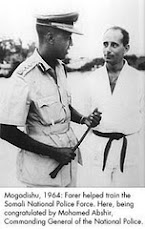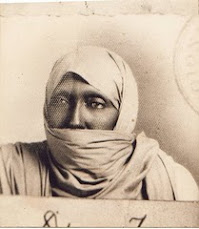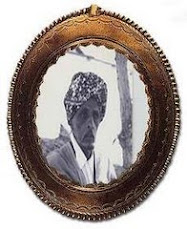 The political future of Somalia will at least partly be decided in northern Somalia. In this regard, the recent escalation of conflict in the Sool region, in the central north of Somalia, merits closer attention and analysis. On Monday, 1 October 2007, Puntland and Somaliland armed forces clashed near Laascaanood, the capital of Sool region.1 Fighting escalated again two weeks later, on 15 October. Since then, Laascaanood has remained in the hands of the Somaliland forces. Though precise numbers are not available, roughly half the town’s population has fled.
The political future of Somalia will at least partly be decided in northern Somalia. In this regard, the recent escalation of conflict in the Sool region, in the central north of Somalia, merits closer attention and analysis. On Monday, 1 October 2007, Puntland and Somaliland armed forces clashed near Laascaanood, the capital of Sool region.1 Fighting escalated again two weeks later, on 15 October. Since then, Laascaanood has remained in the hands of the Somaliland forces. Though precise numbers are not available, roughly half the town’s population has fled.  Some traditional authorities are involved in negotiations, while others wait on the sidelines. At the time of writing Puntland and Somaliland are mobilising for a new round of fighting. The clashes are localised around Laascaanood but they have a far wider regional relevance. In the first place, they indicate political splits and conflicts within the local community, the Dhulbahante clan, which inhabits most parts of Sool region as well as parts of eastern Sanaag and Togdheer in northern Somalia. The fighting further divides a community already fractured by a number of internal conflicts, ‘traditional’ blood feuds, but also tensions over split loyalties towards Somaliland or Puntland. Second, the clashes bring war to an area that has not seen serious fighting before.2 In addition to large numbers of internal displaced people, further armed confrontation will result in a humanitarian disaster with attendant victims and the destruction of the already poor infrastructure. Third, fighting in the region has implications for the whole security structure in northern Somalia. In this process, Somaliland and Puntland risk the loss of their most important asset – their relative peacefulness in comparison with the situation in the south of Somalia, particularly in Mogadishu. Fourth, the current crisis between Somaliland and Puntland over Laascaanood and Sool brings a focus on one of the underlying conflict drivers for the whole region, the territorial integrity of the former unitary state of Somalia. It points at ongoing and intensifying processes of state-(re)formation in a post-colonial context with high significance also for other African settings. Fifth, in regional security terms, the conflict could fall prey to the counter strategies of the larger players in the Horn of Africa. Though Somaliland and Puntland are currently closely allied to Ethiopia, deepened conflict could result in interventions by Ethiopia and Eritrea on opposing sides. Finally, if the conflict over Laascaanood and Sool were decisively won by Somaliland, it would be another step toward formal recognition and independence. This would set precedence for other secessionist movements, e.g., in Ethiopia. In order to understand the current crisis in its historical context, the next section will briefly outline the developments preceding the most recent events. The second part of the text disentangles the local and wider dynamics of escalating violence involved in the most recent clash between Somaliland and Puntland.
Some traditional authorities are involved in negotiations, while others wait on the sidelines. At the time of writing Puntland and Somaliland are mobilising for a new round of fighting. The clashes are localised around Laascaanood but they have a far wider regional relevance. In the first place, they indicate political splits and conflicts within the local community, the Dhulbahante clan, which inhabits most parts of Sool region as well as parts of eastern Sanaag and Togdheer in northern Somalia. The fighting further divides a community already fractured by a number of internal conflicts, ‘traditional’ blood feuds, but also tensions over split loyalties towards Somaliland or Puntland. Second, the clashes bring war to an area that has not seen serious fighting before.2 In addition to large numbers of internal displaced people, further armed confrontation will result in a humanitarian disaster with attendant victims and the destruction of the already poor infrastructure. Third, fighting in the region has implications for the whole security structure in northern Somalia. In this process, Somaliland and Puntland risk the loss of their most important asset – their relative peacefulness in comparison with the situation in the south of Somalia, particularly in Mogadishu. Fourth, the current crisis between Somaliland and Puntland over Laascaanood and Sool brings a focus on one of the underlying conflict drivers for the whole region, the territorial integrity of the former unitary state of Somalia. It points at ongoing and intensifying processes of state-(re)formation in a post-colonial context with high significance also for other African settings. Fifth, in regional security terms, the conflict could fall prey to the counter strategies of the larger players in the Horn of Africa. Though Somaliland and Puntland are currently closely allied to Ethiopia, deepened conflict could result in interventions by Ethiopia and Eritrea on opposing sides. Finally, if the conflict over Laascaanood and Sool were decisively won by Somaliland, it would be another step toward formal recognition and independence. This would set precedence for other secessionist movements, e.g., in Ethiopia. In order to understand the current crisis in its historical context, the next section will briefly outline the developments preceding the most recent events. The second part of the text disentangles the local and wider dynamics of escalating violence involved in the most recent clash between Somaliland and Puntland.Background to the Current Crisis – The Tightening of the Knot
The government of Maxamed Siyad Barre was overthrown in Mogadishu in January 1991. At the same time the Somali National Movement (SNM), the guerrilla organisation dominated by members of the Isaaq clan-family, took control over north-western Somalia. Shortly afterwards this region, as the Republic of Somaliland, declared its independence from the rest of Somalia, in line with the borders of the former British Protectorate.3 These old/new borders cut Somalia in the central north, about 70 km east of Laascaanood, where the British and the Italians drew the line in 1874 (Lewis 2002: 55).There were a number of reasons for this step, but two reasons stand out in particular. First, was the unfolding civil war in southern Somalia after the fall of Barre and the usurpation of the presidency by Cali Mahdi. Mahdi was one of the two leaders of the United Somali Congress (USC), and he took the presidency without the consent of his co-leader in USC, Maxamed Farax Caydiid and without consulting with the other guerrilla factions, e.g., the Somali National Movement, who felt that the south was again marginalising the north (present day Somaliland). Subsequently, Caydiid and Mahdi started to fight for power in Mogadishu causing large-scale destruction and disaster. Additionally, the news coming from Mogadishu was truly horrifying and repelled people in the north. Of second and equal importance for Somaliland’s secession was the still fresh memory of the bombardment of Hargeysa and Burco by Siad Barre’s army. The SNM had taken the two towns in north-western Somalia, which are predominantly inhabited by Isaaq, in a surprise attack in late May 1988. The regime’s counter-attack with indiscriminate shelling and bombing caused thousands of civilian causalities, and hundreds of thousands of refugees fled to the countryside or across the border into eastern Ethiopia (Africa Watch 1990). This collective experience of suffering transformed the SNM into a mass movement, which a close observer at that time described as ‘simply the Isaaq people up in arms’ (Prunier 1990/91: 109).In early 1991, when Siyad Barre was overthrown in Mogadishu by the USC, the SNM took control over much of north-western Somalia. The decision to secede was taken at a conference (Somali sing.: shir) in the town of Burco in May 1991. Representatives of all clans inhabiting north-western Somalia were present, among them Dhulbahante and Warsangeeli.4 At the shir in Burco the SNM leadership – mostly former army officers, politicians and intellectuals – was not clearly in favour of secession.5 However, the rank and file of the movement, remembering the bombardments in 1988, was. The situation was volatile since everybody around the conference had arms, and the SNM was without doubt the most powerful party. One of the high ranking traditional leaders of the Dhulbahante, the late Garaad Cabdiqani, recounted the situation as follows:We saw that it was impossible to reach an agreement with the people of the southern regions. We decided to establish an administration for the northern region. […] While we were in Burco, big demonstrations happened in the large towns of Hargeysa, Burco and Berbera. There was no other choice than to say: ‘Yes, we accept.’ At this moment we were not convinced about secession, but no one could say ‘no’ (in Höhne 2007). This step was presented by the SNM as revocation of the voluntary union between British and Italian Somaliland that had united to form the Republic of Somalia on 1 July 1960 (Somaliland Ministry of Foreign Affairs 2002). Despite this historical reference, the declaration of independence in 1991 was clearly born out of the momentary dramatic situation and was ill-prepared. A number of SNM leaders and many members of the non-Isaaq clans were not in favour of cutting themselves off from the rest of Somalia...To read the rest of the piece..more..Puntland and Somaliland Clashing in Northern Somalia: ...
background The Somali conflict: The role of external actors
USC Hawiye clan......... Looking back destruction of somalia..
The Somali Conflict Root causes , peace-building strategies



.jpg)












No comments:
Post a Comment